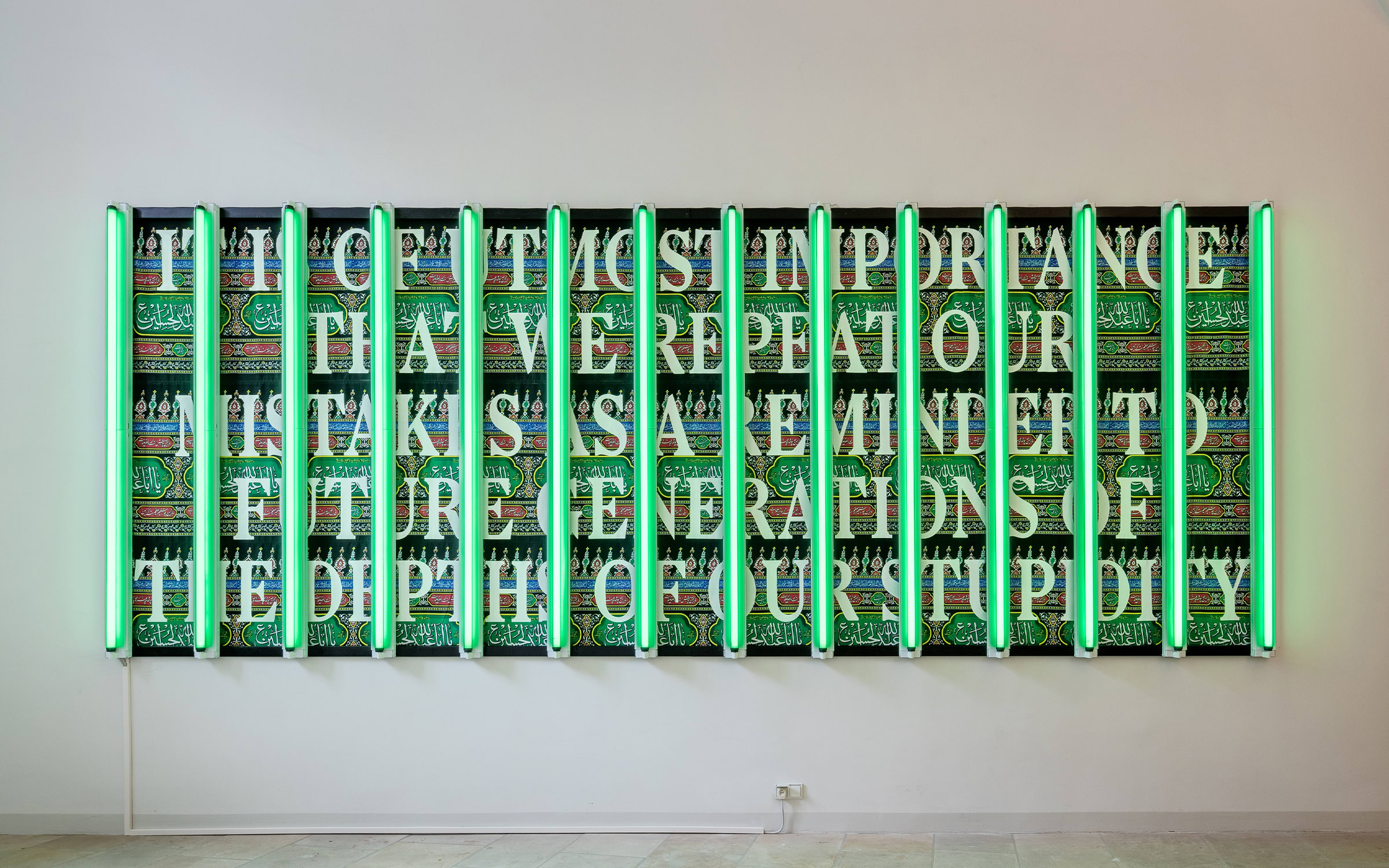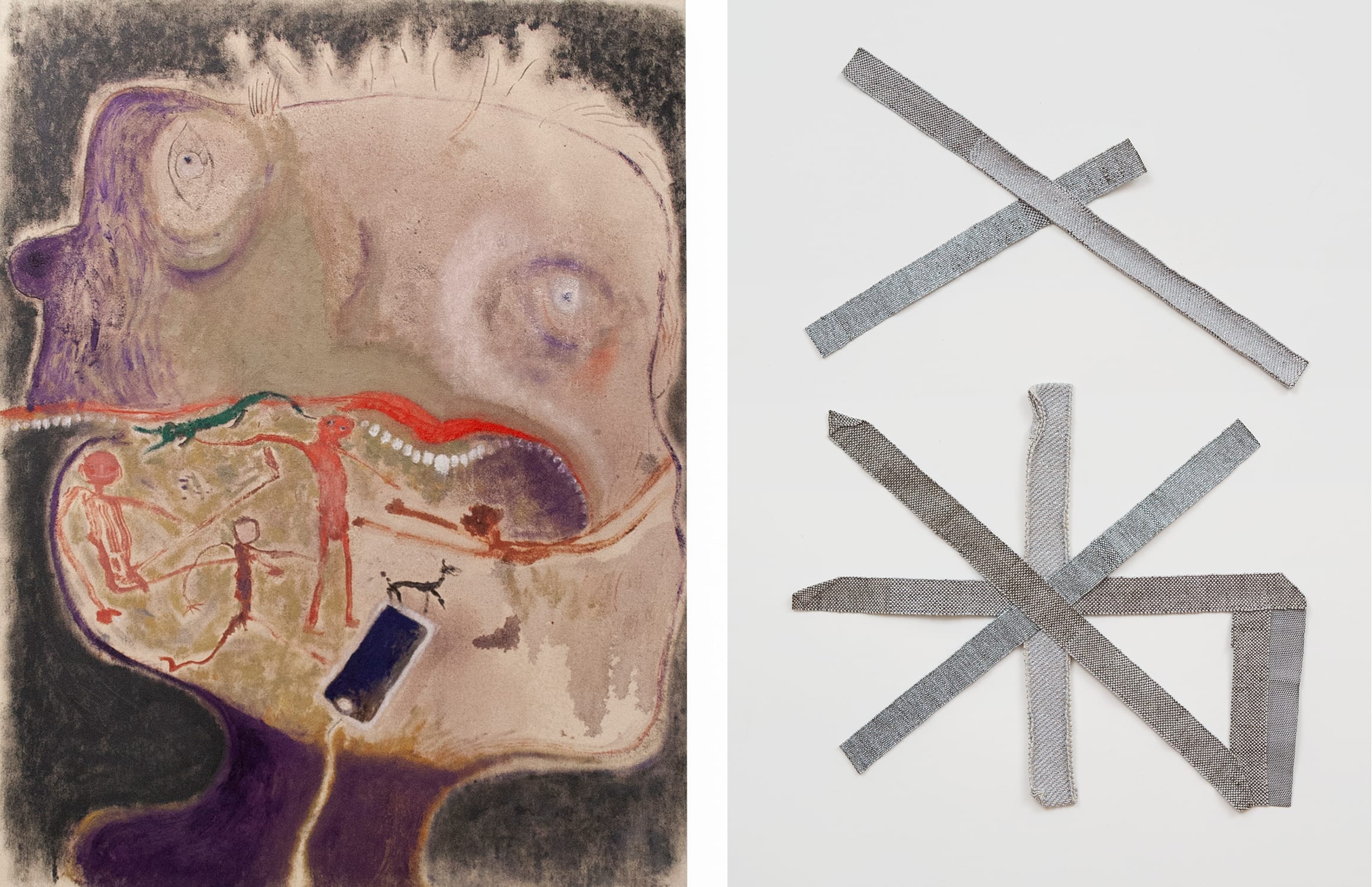The Iron Curtain may have long since been drawn back, but in the artworld the term ‘Eastern Europe’ is still valid, if not somewhat fetishized. And not without good reason, according to the Berlin-based collective Slavs and Tatars: ‘There has been, at times, a facile attempt to gloss over the differences between Eastern Europe and Western Europe, in light of the EU expansion or post-1989. But a closer look – at market prices and viability or cultural public spending – quickly reveals how misleading such an approach is.’ To understand Eastern Europe as a uniform entity would be short-sighted, but zooming in on Romania, Poland, and Kosovo reveals some of the characteristics shaping the voices of contemporary art in this region.
Although all three countries were ruled by socialist regimes during the postwar period, Romania and Poland remained part of the Eastern Bloc, their official art largely dominated by state-imposed socialist realism. Yugoslavia under Tito, on the other hand, became part of the Non-Aligned Movement in 1961, granting artists some freedom and the possibility of international exchange, as illustrated by New Tendencies, a modernist movement that organized five exhibitions in Zagreb between 1961 and 1973.

The decades since the revolutions of 1989 and Yugoslavia’s dissolution have been marked by political unrest and the repercussions of economic mismanagement. While the struggle for Kosovo’s autonomy led to war with Serbia in 1998, Romania and Poland’s relatively peaceful paths toward democracy resulted in the sharp rise of authoritarianism. Consequentially, a young generation of artists now not only relies on low-cost media like video and performance to critique repressive politics that aim to curtail women’s and LGBTQ+ rights, but it also engages in political activism, fighting for these minorities’ visibility, in politics and art alike.
The works of some Romanian artists are part of the Western canon, such as the modernist superstar sculptor Constantin Brâncuși, but the artworld has only recently taken notice of the country’s postwar generations. Works by Ion Grigorescu, Geta Brătescu, and Ştefan Bertalan have appeared in exhibitions including the Venice Biennale and documenta. Now, post-revolution artists such as Mircea Cantor and Adrian Ghenie continue to reflect on the country’s history – not limited to the Ceaușescu regime – through works that deal with structures of power and violence, as seen in Cantor’s fingerprint barbed-wire fences entitled Chaplet (2007–21), or historical figures, like Ghenie’s dark collage-paintings that distort controversial subjects such as Vincent van Gogh, Donald Trump, and Josef Mengele.
Before his painting career skyrocketed, Ghenie founded Galeria Plan B in Cluj, northwest Romania, with the artist Mihai Pop in 2005. Pop remembers how, in the early 2000s, Romanian society and culture were at a deadlock. Visual arts were almost nonexistent. ‘We practically had to rebuild the local context,’ he says, ‘which could only be done by connecting to the international scene and the art market.’ Plan B expanded to Berlin in 2008 to be part of ‘a functioning art scene’ while the original Cluj location became more established. Though the gallery’s success put pressure on the local community in Cluj, a fresh scene of artist-run spaces is blossoming. ‘They don’t care about Ghenie,’ laughs Pop, but he concedes that ‘the West seems incapable of going beyond the era of Orientalism’ despite artists’ global mobility, leading some to mimic the very expectations of the West in what he calls an ‘emigrant mentality.’
If contemporary Romanian artists had to start from scratch, the scale and continuity of Poland’s modernist tradition since the 1920s distinguish its art scene within the former Eastern Bloc, notes Andrzej Przywara, director of Foksal Gallery Foundation in Warsaw. ‘During the communist period it was possible to maintain international artistic relations, the vitality of communities, and the quality of institutions, like the Museum of Art in Łódź,’ he says.
Painters Paulina Ołowska and Wilhelm Sasnal and installation artist Monika Sosnowska came to prominence in the 1990s and succeeded abroad, but Poland’s current young generation questions today’s art market and institutions. ‘They demand a more equal approach in terms of gender, race, and class,’ says Przywara. One such artist is Alex Baczyński-Jenkins, whose video works, such as Faggots, Friends (2019–), chronicle queer Polish life through cine-performance. As co-founder of the Warsaw-based queer feminist collective Kem, he is active on the LGBTQ+ scene, which is growing ever stronger in the face of the populist PiS government.
As populist cultural politics gradually invade institutions, directors are replaced with others who cancel exhibitions and cut funding, as happened at Ujazdowski Castle Center for Contemporary Art in Warsaw. Meanwhile, new collectors and young, internationally active galleries have recently invigorated the city’s scene and encouraged experimentation. At Galeria Dawid Radziszewski, for instance, Joanna Piotrowska’s black and white photography explores gestures of the body, intimately negotiating themes of protection, freedom, and oppression.
Poland and Romania belong to the EU, but Kosovo has only partially been internationally recognized since declaring independence in 2008. Having lived through war as teenagers, politics and art are inseparable for Flaka Haliti and Petrit Halilaj. Representing Kosovo at the 2015 Venice Biennale with Speculating on the Blue, Haliti installed iron-bar sculptures on a sandy beach stained the blue of the United Nations flag, the color a recurring theme in her oeuvre in a reflection on Europe’s national borders. Halilaj, in contrast, often draws on very personal memories. In 2020, he installed a giant nest at the Museo Reina Sofia in Spain – a country that doesn’t recognize Kosovo. Decorated with oversize textile reproductions of flowers meaningful to him and his partner, Spanish artist Álvaro Urbano, the work addressed the recognition of both citizenship and homosexuality, which isn’t fully accepted by the conservative Kosovar society.
Like its society, Kosovo’s art scene seems to be divided into two schools of thought – ‘An older, institutional model that is still represented by the art education at the university and, on the other hand, an individual approach that most often materializes in poetic works,’ say Katharina Schendl and Isabella Ritter, directors of LambdaLambdaLambda gallery in the country’s capital, Pristina. They represent the youngest generation of Kosovar artists, such as Brilant Milazimi, Dardan Zhegrova, and Astrit Ismaili, but look beyond borders for artistic positions that show the ‘power of creativity within a context that bears many limitations.’ Among them is Zagreb-born Hana Miletić, whose textile pieces contrast deep hues of ochre, gray, and yellows against soft blues. Hand-dyed and processed from silk and wool, they invoke Yugoslavia’s feminist history of care and repair.

According to the gallerists, artworks addressing the war are an ‘important export tool’ for visibility in the Western artworld, but the topic no longer has ‘any urgency within a younger generation of artists.’ Rather, they exhibit a ‘seemingly naive sensibility, often paired with a slapstick humor when negotiating their status quo as citizens as well as artists.’ Milazimi’s paintings, for example, evoke an almost Surrealist air as he combines moody, washed, and spray-painted hues with spaghetti-fied human figures and witty titles such as Did we miss calls or calls missed us? (2021).
The title hints at a common denominator for young artists from all three countries – digital culture, accessible from anywhere. This is also palpable in Czech artist Klára Hosnedlová’s minute, photorealist embroideries, which are based on digital photography of performances and remix utopian aesthetics with a 2001: A Space Odyssey twist. In these works young people in silver satin pajamas pose like soft-serve astronauts, inhabiting a world that no longer defines itself through the binary of East and West ... or perhaps any other.
Kathrin Heinrich is an art historian and critic based in Vienna.
Hana Miletić will feature in Art Basel’s Statements sector with LambdaLambdaLambda gallery. In September, the work of Klára Hosnedlová will be on view at Kraupa-Tuskany Zeidler and in the Parcours sector, Petrit Halilaj at kamel mennour, and Joanna Piotrowska at Galeria Dawid Radziszewski.
Discover more related content below:
Images, from top to bottom: 1. Klára Hosnedlová, Untitled (from the series Nest) (detail), 2020. Courtesy of Fondazione Sandretto Re Rebaudengo, Turin. 2. Slavs and Tatars, Mystical Protest, 2011.Courtesy of the artists and Kraupa-Tuskany Zeidler, Berlin. 3a (desktop view): Adrian Ghenie, The Uncle 4 (detail), 2020. Courtesy of the artist and Galeria Plan B, Cluj and Berlin. Photo by Mathias Schormann. 3b (mobile view): Adrian Ghenie, Self-Portrait with Animal Mask (detail), 2018. Courtesy of the artist and Galeria Plan B, Cluj and Berlin. Photo by Sebastiano Pellion di Persano. 4. Paulina Olowska, Alcoholic, 2020. 5. Paulina Olowska, Lover, 2020. Courtesy of the artist and Foksal Gallery Foundation, Warsaw. 6. Installation view of Monika Sosnowska's exhibition 'Still Life', Foksal Gallery Foundation, Warsaw, 2015. Courtesy of the artist and Foksal Gallery Foundation, Warsaw. 7. Alex Baczynski-Jenkins, Until one thousand roses bloom (with Warsaw in the background), Foksal Gallery Foundation, 2018. Photo by Karolina Zajaczkowska. 8. Brilant Milazimi, Did we miss calls or calls missed us?, 2021. Courtesy of the artist and LambdaLambdaLambda, Prishtina. 9. Hana Miletić, Materials, 2021. Courtesy of the artist and LambdaLambdaLambda, Prishtina. Photo by GRAYSC.

